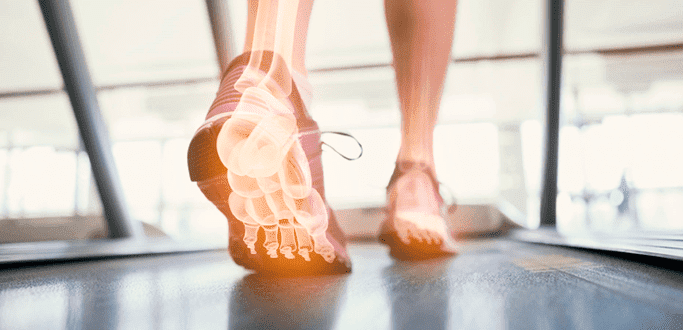August 31, 2017

Many people are prone to ankle sprains, and that places them at risk for falls and injury. Identifying and treating chronic ankle instability (CAI) early on can spare patients the foot and ankle pain that comes with a sprain. Once CAI is identified, treatment for ankle pain can center around strengthening and correcting the muscles, connective tissue and nerves that stabilize and govern ankle movement.
There are many assessment tools available for identifying CAI, yet excessive testing can be uncomfortable for patients who suffer from chronic ankle pain. Most of the tests evaluate balance and landing, which requires the patient to hop. Testing for CAI is important before initiating treatment for ankle pain, but how much testing is needed?
Traditionally CAI has been identified by having patients complete self-reported questionnaires, yet those tools do not reveal objective information about functional limitations. Researchers wanted to test the efficacy of objective clinical assessments to see if they could differentiate between subjects who had CAI and those who did not. They used ankle injury questionnaires and the Cumberland Ankle Instability Tool (CAIT) to categorize study participants.
Twenty-five of 58 study participants were identified as having CAI, and a control group of 33 participants showed no evidence of CAI. All participants then performed clinical balance tests that included the Time in Balance Test (TIB), Foot Lift Test (FLT), Star Excursion BalanceTest (SEBT), and Single-Leg Hop Test (SLHT), in randomized order. Using test results as data, the study’s authors found that 71% of participants had been assigned to the correct group, when looking at combined results from two, three and four of the tests. The Star Excursion balance test yielded the highest single-test match rate with about 66% accuracy.
The authors concluded that clinicians could effectively identify CAI using just the Star Excursion Balance test and the single-leg hop test, in conjunction with a self-reported questionnaire. The balance tests offer objective information about ankle functionality, giving clinicians quick clinical tools for assessing CAI. They propose future research to see whether the tests are also useful in evaluating the effectiveness of rehab treatment for chronic ankle pain and instability.
Dr. Lev Kalika is a world-recognized expert in musculoskeletal medicine. with 20+ years of clinical experience in diagnostic musculoskeletal ultrasonography, rehabilitative sports medicine and conservative orthopedics. In addition to operating his clinical practice in Manhattan, he regularly publishes peer-reviewed research on ultrasound-guided therapies and procedures. He serves as a peer reviewer for Springer Nature.
Dr. Kalika is an esteemed member of multiple professional organizations, including: